Are my thoughts really true? OCDDo you own your thoughts, or do your thoughts own you? Every thought you have has validity of who you are and what you wanted to think of...right? Errrrr Wrong! There is a point where you have to look at the behaviors you're doing because of the thoughts and see who has ownership. Here is what I mean! The thoughts that cross you remind predict your actions. We either are going to push a thought away or do an action or a behavior because of the thought. Intrusive thoughts are thoughts that we don't really want but we have them anyway. They come and go as they please. The thoughts we give attention to are the ones that want to stick around. But we don't always react to our thoughts. If we did, wouldn't we really be our thoughts? For example...I'm sitting at a restaurant and am looking at someone's food. I'm hungry, my food hasn't gotten here yet. I have the thought, I should go over there and take a piece of bacon. I wonder what would happen. I have feelings, I have thoughts....you know what I don't have....the action. This tells us that we ACTUALLY have a choice. I can see that thought as random noise. meaningless. Because a thought is a thought. Here is a literal definition of a thought. It is merely an idea or opinion created by your mind. It is sudden and spontaneous and has no particular origin. Wow. think of that. This thought has no home. It's a random collection of thoughts that can cause real emotions which make us doubt and question something. So who is owning your thoughts? Well in one way, you do. In another way. No-one does. It has no where to go until we do an action to put it in it's place or just let it fly on by. When it comes to these intrusive thoughts, they can be about anything and cause extreme doubt, which make you believe they are valid. These random thoughts can be toward relationships, getting sick, possible harm, memories, and even responsibilities. When these thoughts don't match your value system we need to treat them as fluff. Nothing. Garbage. A random signal. Meaningless. Once we attach to it and attempt to figure it out, it's going to happen more and more and more. That is when these thoughts own you. You're doing behaviors to remove the thought or perceived threat. Let me tell you why it's important to recognize that you aren't your thoughts. If I take every random thought and run with it. I'm going to be convincing myself that I'm a monster pretty darn quick. If I pass by a girl and my brain says, "wow, she's cute" my brain tries to make sense of this. It's going to say, "well, you must not love your spouse" or you "just cheated" OR I could say, "hey, thanks for the thought today brain." Ultimately, we need to stop taking our brain so seriously. It's screaming out thoughts just to get your attention and says they all mean something, but you're not going to fall for it anymore. Let's actually own these thoughts by giving these types of responses: "sup thought" "coolio, thanks for that." "yep, I guess that could happen" "maybe, maybe not." "you're welcome to stay thought" You're also practicing now pushing them away or making since of them. You're not giving them a good home to burrow into. Once you say, this thought has meaning. It just snuggles right into bed with you. Taking the opposite and not giving it a great answer and just letting it pass on by...it moves over to the neighbors.....no neighbor. It may stick it's head over the fence to try a few more times. But that response of "I do not care" is important so it knows, "man, you can keep trying, and I'm willing to listen to you, but I'm giving you nothing." But Nate! How will I know when it's a thought I actually need to pay attention to? Well, here's my indication. Anxiety mixed with an urge to know. It's a trap! Anxiety always tell the brain the thought is dangerous, BUT here's the kicker. If you don't actually see the danger right in front of you, and I mean it. RIGHT IN FRONT OF YOU. It's not super obvious. Then, we're treating a thought as a thought and allowing it to pass. If you treat a thought as a thought, but try to push it away, you're saying it has value. We don't want to do this. Give yourself more grace for having a thought. No really. Enjoy your life. Enjoy your brain and all the processes it does. the positive thoughts and even the negative ones. Our brain isn't trying to hurt us. Instead, it's actually attempting to help. It's just not doing a great job at it at times. Our job is to retrain it by the responses we give. That response is the most important thing in all of this. Think about this with the next thought you have that causes some distress. My action right now is going to determine if this is important or not. Choose wisely. The next time you have intense intrusive thoughts and you're trying to figure out what you're going to do with them....remember that you don't have to do anything. You have a choice if your thoughts are going to own you or if you're going to own your thoughts. Did you know there are at least 3 types of intrusive thoughts? I made a video about these and how to actually get them to slow down. You're going to need to enhance these skills so you can become even more of a boss! How to own your own thoughts
0 Comments
OCD CompulsionsThis is Nathan Peterson, licensed clinician and OCD specialist. This one compulsion is so very common and most don't even know they're doing it. I often talk about sneaky compulsions. These compulsions come in so many different forms. If you don't know what a compulsion is, it is the thought, behavior, or action that someone might take in order to attempt to gain certainty with their fear and/or reduce anxiety. Here's the compulsion. Telling your OCD story. No don't get me wrong, there are times in your life where you need to tell your experiences. Go through the thoughts and feelings. But many tell their story daily. Whether it be on forums, groups, or to their loved ones. It seems so innocent to do so but let me share with you the dangers of taking this path. What ends up happening is that the individual that suffers with OCD shares the story time and time and time again. And when I mean story I mean they are sharing an experience they had in the day. They are sharing an intrusive thought that came their way. They are sharing a feeling that they have. Essentially, they are confessing their thoughts. They are not necessarily looking for reassurance. Instead they are just simply sharing what they're going through. Here's the tricky part, for most, not all... They are receiving reassurance. Maybe they don't even though they are doing so. They are receiving reassurance because they just shared their experience to someone and that person did not freak out. That person may have given them reassurance. They may have looked at their facial expression to see if they think I'm crazy or do they not. Do you think I'm OK or do they not. The sense of being a roundabout way of receiving reassurance. I mean heck, we're taught our whole life to share experiences. But when it comes to intrusive thoughts and obsessions, we were verification and certainty. We want support. See what happens if you don't. If you feel that overwhelming need to share, maybe you feel like you won't get better until you do, it may be a compulsion. Maybe delay it. You're not waiting for your spouse to get home to tell them what you've gone through. You wait two or three hours after they've already been home. See if you can wait. If your loved one or support person has asked you to share what you've gone through. You may still have to evaluate and ask yourself, why am I sharing this intrusive thought today. Is it to gain support what is the gain Comfort and reassurance. There are obviously instances where sharing your experiences and story are important. To someone like a therapist. Some may set up checkpoints. Meaning they have set a certain time every other day or every week whatever is reasonable to share and experience at a certain time. But again it's looking at if this is going to help or hurt your OCD. I would love it if people changed talking about their OCD experience that day to here is how I used treatment with my OCD experience. I had this intrusive thought today while I was driving. Guess what I did, I kept driving, I didn't look in my rear view mirror, I didn't go back and check. I kept driving. What does does is promote treatment more than give the story more power and value. Think about this the next time you want to share about your intrusive thoughts or OCD story. If you've been watching my other videos, we've learned that OCD is OCD and we give the thoughts no value or power. So, to help with this process, not going through it and "figuring it out" shows that it's all fluff. It doesn't mean that you don't matter, it may just mean that those thoughts are error messages that don't need to pay attention to. To help you build a stronger muscle to stop these compulsions, go watch this video, where I talk about simple tricks to stop compulsions all together. Thanks so much for watching and I'll see you next time. Treatment for OCD compulsionsWhy OCD feels so realI'm Nathan Peterson, a licensed clinician and OCD specialist. Have you ever wondered why your OCD feels so incredibly real? For many, they know that the thought isn't real, but it feels real. So when something feels real, we react as if it's real....right? Think about it this way. When we watch a movie we can become immersed and get absorbed. We get hyper focused, get lost and even confused. We can lose touch of reality for a bit. For some they may watch the same movie and not be connected or immersed at all. So what's the difference? One person is allowing and inviting themself to get lost in the story and the other person see it for what it is and keeps it at the surface. Both have control over this decision. So when it comes to OCD and an intrusive thought, one main point to bring it even more value is the anxiety or distress attached. This anxiety says.....HEY, this is important. Keep thinking about this one. As you get engrossed into the narrative or story, we tend to feel more emotions and feelings. Making it feel...well...real. When something feels real, we spend time trying to "figure it all out" and prevent a possible catastrophe. Thus adding even more value to it. So when I hear someone tell me that their OCD thoughts feel so real, it typically isn't the first time they've had that thought. They've had this thought many times and in each moment taken the time to try to understand it. Thus making it feel more real overtime. We also know that OCD attacks what people care about. We have many doubts and questions in our mind everyday. But most of the time they won't feel real because we don't care about it. For instance, I may be watching tv and hear about how easy it is to get fungus under our toenails. Why do I not care about this....because it's not my thing. It's a threat like any other. My brain only cares about whatever I made a connection with and put value to. Maybe it's my relationship, maybe it's a certain disease, maybe I'm focusing on my breathing. Either way and either topic. It's all the same. One only feels real because we make it feel real. To stop this progression of realness, we can see or hear a threat and choose to not put value to it. Choose to see information as information. Choose to keep things uncertain. Choose to stop ruminating. Choose not engage in a compulsion. The urge may be there, but you always have the choice. When you take this proactive choice to not engage, it no longer feels real. Why? Because you are telling your brain that you simply don't care. You're letting life be what it is. And don't fall for the, "but I'm different" - That's just another trick that feel's real. You're a special person, but your topic or content of the obsession is not. So ultimately, let it feel real. Just choose to not engage. Not figure out. It's got to be pretty obvious that there is a problem. 1000% hit you in the face obvious. If that is not there, we may treat this "real feeling" as a false signal. Have you ever had a memory of the past, maybe a story that you've told over and over and over again throughout your life. Sometimes there is a point where you're actually not sure if it happened the way you've been telling it. Maybe it started out as an embellishment, but overtime it actually feels real with some confusion. I think of this the same way, we've told the story so many times, just like the OCD brain tells the content of the story and all of a sudden, we're confused on what is accurate and what is not. In simple terms: Stop telling the story! Stop creating a narrative. Stop with the "what ifs" - You don't need the story. Yourself without OCD doesn't need the story. Let it go. Sit with the discomfort and the "realness" feelings. Let it pass. The more you do this, the less scary and real it may feel. The way we think is the way we feel. If I felt someone is judging me, I'll feel anxious, scared, and sad. Even if this is untrue. I made up a story and fell for its tricks. Don't fall for it. Since OCD affects our mood, see how you can control these mood swings with this video here! Thanks so much for watching and I'll see you next time. OCD feels realOCD seems realThought stopping doesn't workOne of the most common questions I get asked is….How do I STOP thinking about my fear? How do I stop obsessing? How do I STOP the anxiety. If you’re like most, you’re searching videos to learn how to STOP your symptoms. There in lies the TRAP. We don’t learn to STOP thoughts or fears…we learn to respond differently to them….which in turn allows symptoms to decrease. If you start off you search or mindset with….how can I stop……Don’t do it! It’s a trap! Seriously. You’re just training your body to continually check To see if you are still having thoughts or not. Which actually produces more thoughts. It is actually natural for the brain to automatically start pushing thought we don’t want. Which is why it takes practice to lave them back. Let me take you through what to do instead of pushing thoughts away or ignoring them. So how to avoid suppression? To get out of the thinking that you need to STOP thinking about your fears. Well, you can start by learning to notice when these thoughts occur. Allow thoughts to be thoughts. Not put any meaning to a single thought. A thought is bad or a thought is good. When a thought brings anxiety or distress, we tend to label it as bad. When our brain hears bad, it goes to this automatic process of pushing. Practice having a thought than simply saying, “oh cool, there is the thought again. You’re welcome to stay as long as you want” As your learning to accept a thought is a thought you’re also practicing not doing a compulsion. A compulsion is anything you are actively choosing to do to remove the thought, or to reduce your anxiety symptoms. For instance, if you have a distressing thought you quickly shake your head to get it to go away. Maybe you tap something a few times. It’s possible you go to the Internet to research different ideas about your thought. You might have to say a phrase for the thought to go away. These are all the things you have to be aware of and stop doing. Because we cannot accept a thought, take value away from it, and also do a compulsion of the same time. It’s like we’re not fully accepting the reality of the thought. It’s a halfway effort. Once you learn to accept our thoughts, even if you think it is the worst thing in the world to think. OCD can bring some pretty gnarly thoughts. It’s easy for somebody to say, yeah I can accept a thought about something small but this doesn’t apply to my big scary thoughts. Going back to what was said earlier, thoughts are thoughts. There is not one thought that has more value or power than another. Some choose to use act therapy. Acceptance and commitment therapy. This builds flexibility in your thinking and allows you to accept the thought. Without changing it whatsoever. At the same time some choose to expose themselves to the triggers or obsessions. This is so you can continually learn. Learn to not respond the way you normally would want to with a thought. For instance, I might pay attention and write down all the triggers I noticed that bring these thoughts. I might purposely expose myself to them. Not all at once, but starting off with something small. Maybe it’s looking at a picture of something, maybe it’s a video, maybe it’s hanging out with my kid, maybe is driving, maybe it’s cooking dinner, maybe it’s saying a certain word, maybe it’s touching something. Regardless of what it is, you are practicing engaging with this thing, not doing the compulsions, and pretty much acting like you don’t care. Allow the thoughts to come, allow them to leave. You don’t care how long they stay. They have no value unless you give it value. This takes practice, practice, practice. It is easy for anxiety or OCD to say, this one is important. This one is different. The tools that were just presented to me, do not apply to me. Let me tell you, your OCD or anxiety is no different than someone else. The next time you think, “I need to get rid of these thoughts. I need to get them to stop.” Remember that we are actually doing the opposite. You can even say, “oh boy, I love these thoughts.” “yes, thanks for coming my way.” “these are amazing!” “I wish you would stay forever.” These types of responses, help the brain know that you simply don’t care. Let me know in the comments, what response can you give your OCD and anxiety today when you have distressing thoughts? Thank you so much for watching, and I will see you next time. Thought suppression and OCDOCD thoughts won't stopExposure Therapy For OCDWhen somebody is facing their fear, they repeat this process over and over again their body tends used to it. We’ve seen this in many different ways such as jumping into a really cool swimming pool. At the very beginning it is very cold but their body adapts and get used to it. We didn’t have to spend time convincing ourselves it was going to get better, it just happens. This can be seen when we are using exposure and response prevention. When you are exposing yourself to the upsetting fear it’s going to feel very difficult at the beginning. Overtime, you may face the same fear but notice that the anxiety level is a lot less. This is seen as the habituation model. That we essxentially are doing exposures to reduce your anxiety by half or more. You’re getting used to it, you’ve taken the value away from it. When it comes to the habituation model, it’s all about this anxiety reduction in your body adapting just like the swimming pool. We will often use us as a measure of success if you were doing exposures correctly. If you’re anxiety is reducing this is a good thing. There are definitely some drawbacks from using the habituation model. Anxiety is something that we want to take value away from as well. If we are focusing solely on anxiety and having us go up and down individuals can get stuck in paying attention to the anxiety and wondering if they are doing the exposure correctly or not. Let me start obsessing about the actual anxiety versus the actual fear. Many will start to question and wonder why they’re in anxiety is not reducing. Well evidence shows that the habituation model does work, individuals can you get stuck with these pitfalls often. This is why there is another approach to exposure and response prevention called inhibitory learning. While this is still being researched there is evidence that shows that this helps reduce OCD symptoms as well. The difference is not the actual exposure you were doing but rather the way you were approaching it. With the inhibitory learning model you are teaching your brain more than reducing anxiety. Exposures are all about what can your brain learned from this experience. It doesn’t matter if your anxiety reduces or not. It might not even matter if you have anxiety while you’re doing the exposure. The whole mindset is all about your brain learning something new. So if I was facing a fear that really caused some anxiety, the way I approach is designed is to face the fear, expose yourself to it and RESPOND differently to the fear. You sole focus is what am I teaching my brain by every movement, words I’m saying, what I’m thinking, how I’m behaving. If I avoid touching something because it’s contaminated, my brain learned that that thing is dangerous. If I touched it and acted like it wasn’t a big deal and didn’t do any compulsions, then my brain learns it’s not a big deal. You may learn time and time again that you faced your fear and NOTHING happened. That is what the brain is learning. If you’re confused by the two, here is an easy way to remember: The habitual model means your body is getting used to it and your anxiety is reducing. Inhibitory learning model means your mindset is all about what your brain is learning from the exposure regardless of the anxiety felt. Realistically, there isn’t the right choice comes to do an exposures. You do what you feel like is best for you. I have used both models together where I focus majority of my time making sure that the person knows that the brain is learning something. We use anxiety as a measure but ultimately it doesn’t matter if the anxiety reduces or not. If your brain can learn that the fear that you have is not happening and it is it because you’re trying to control the situation what is the compulsions and to me that’s one of the best ways to do an exposure. Let things be. Stop controlling. It feels like an experiment, but the experiment is worth taking for your brain to learn something major. That you’ve never been a danger. Inhibitory Learning For OCDHabituation For OCDMy OCD Feels UniqueYou are not special! WAIT! Don’t don’t run away! I needed to get your attention for a moment. If you leave now you think I’m just a big jerk. Here’s what I mean by this!
So here is what I mean by you not been special. First of all your special. You matter in your feelings matter. Because you’re even watching this video right now it shows a lot of strength. So what I’m really meaning is that the OCD that you are experiencing is not different. Individuals can often think that the topic or theme that they are going through this special, it’s different, no one understands exactly what they are going through, its untreatable, I hear all these videos online I see all this advice but it doesn’t apply to my theme. Errrrrr! Nope! Your OCD is not special or different. This to me is one of OCD’s biggest lies. If it can make you believe that you are untreatable and that you are different from what you are experiencing then it’s got you. Individuals will often tell me that exposures they hear the specific theme just don’t apply to them. That if people really knew all the details of everything there experiencing they would change the treatment. So this is something that is important to note, something to tell your OCD even if you think it is different than everyone else’s to remind yourself that OCD is OCD. That follows the same route as everybody else. It’s making you doubt in question yourself and who you are as a person. It’s making you question the threats in the future and if they can come true or not. It’s giving you an intrusive thought putting a lot of meeting on this thought making you feel anxious that’s wanting you to do something to fix it. Simple as that. When we see OCD simply becomes simple. If you see OCD is complicated, different, or special, than it has the upper hand. To take control is to see it simply. Do not see yourself as different or special. Like I said you as a person are unique and special. Your OCD does not get to join this party. So as you’re seeing the videos that I have, your hearing advice given, and you think it doesn’t apply to your theme. Remember that this is a lie. Give yourself more credit. You can even remind your OCD that it’s not special when it’s trying to take the light. Give yourself the opportunity to do treatment. I know what people say, “but if you only heard what I’m going through you’d be shocked. You would say that mine is different.” Don’t even allow your brain to go there. Instead he focus on living life and enjoying. This tactic the OCDs using is no longer going to be something you fall for. Treatment is available if you’re looking for a specialist. So here’s my question for you, have you ever felt that your OCD is different than everyone else’s? How To Stop Ruminatingmination is essentially trying to problem solve the perceived threat or fear. It’s not as easy to just say, “stop ruminating”, so here are some tips for you when you feel like you’re stuck in the OCD rumination.
Mental Hoarding OCDMemory Hoarding can be so difficult for the person experiencing it. Imagine feeling the need to remember EVERYTHING. Seriously. If you can’t keep the memory, you’re not sure what will happen. Something bad? Maybe you’ll regret not having it when you need it. You're feeling anxious because there is a fear that you may need the memory later. Let us go through what mental hoarding looks like and how to do evidence-based treatments for it. Afraid to lose a memoryMemory HoardingLife AFTER OCD | What does it look likeWe often talk about what to do when you're having OCD symptoms. But, what does it look AFTER you go through treatment? Do you stop treatment? Are you cured? Let's go through this so you can have a good perspective of what "recovery" looks like. Schizophrenia OCDSchizophrenia OCD, Psychosis OCD, or plain ol’ “Am I going crazy” OCD. Whatever you call it, it can be very distressing to those to experience it. OCD can make someone believe anything. Even make you believe that you may be going crazy. You may even wonder if you’re hearing voices or seeing things that aren’t there. Let’s go through what it looks like and how to do the treatment. Check Out The Online Course For OCDPsychosis OCDGoing Crazy OCD |
AuthorNathan Peterson specializes in working with OCD and Anxiety related disorders and has done so for the past 7+ years. Archives
January 2023
Categories
All
|


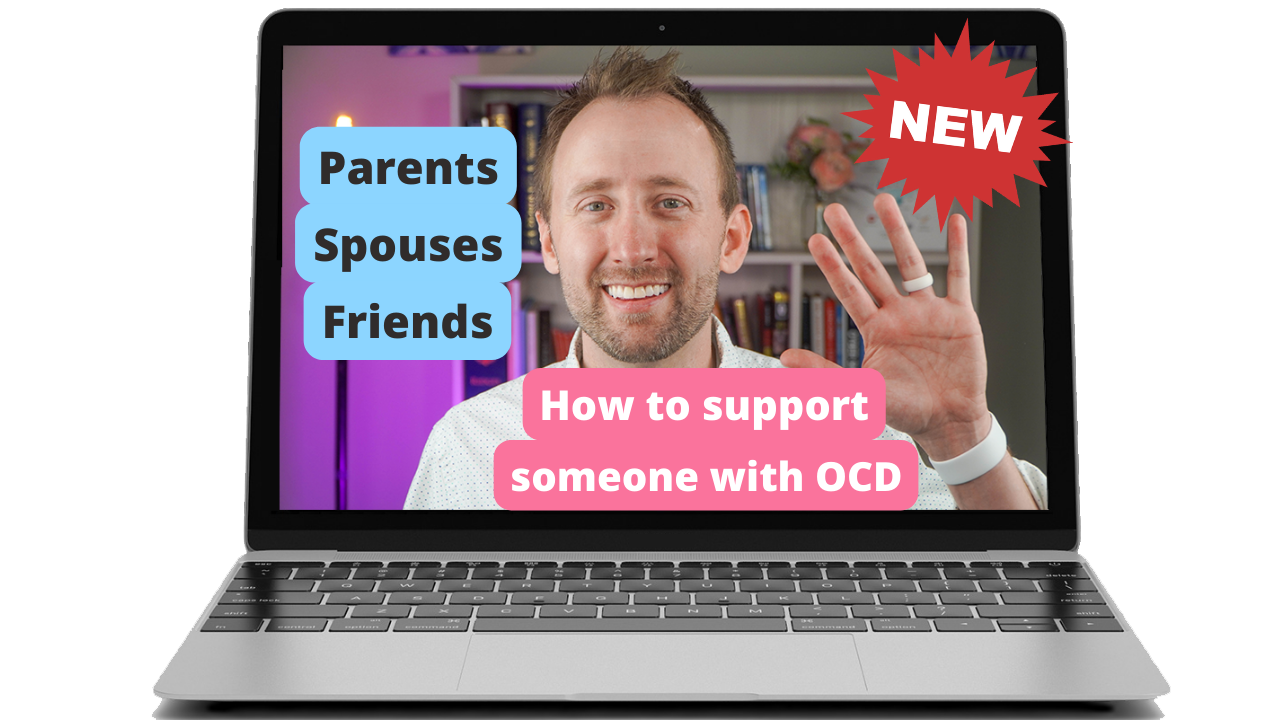
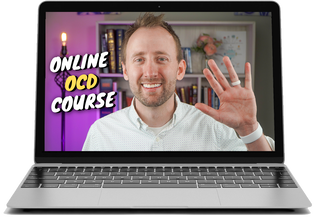
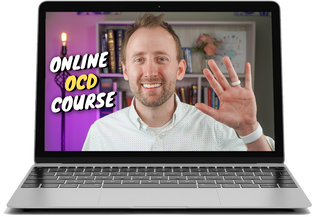
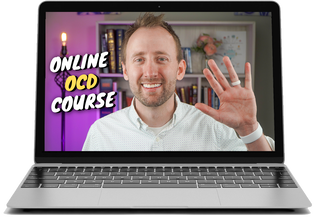
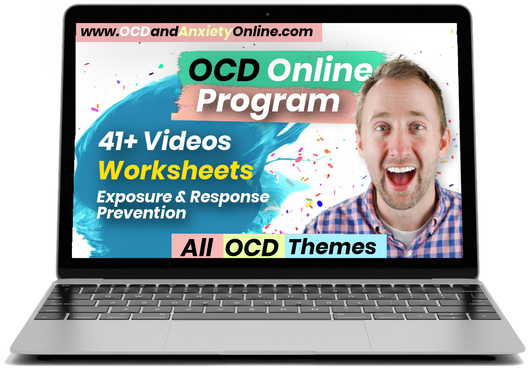
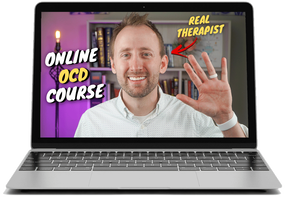
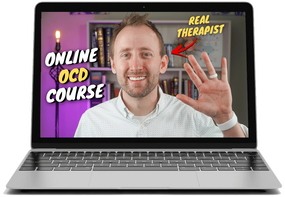
 RSS Feed
RSS Feed